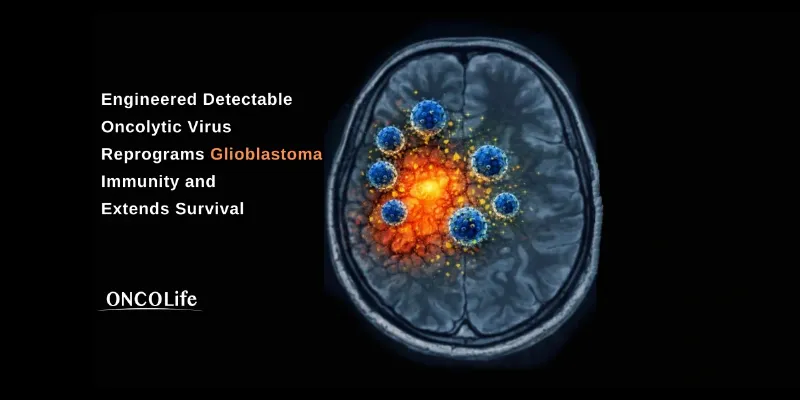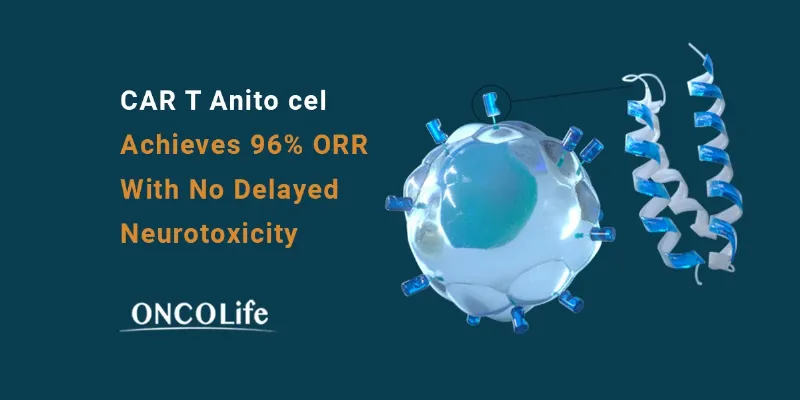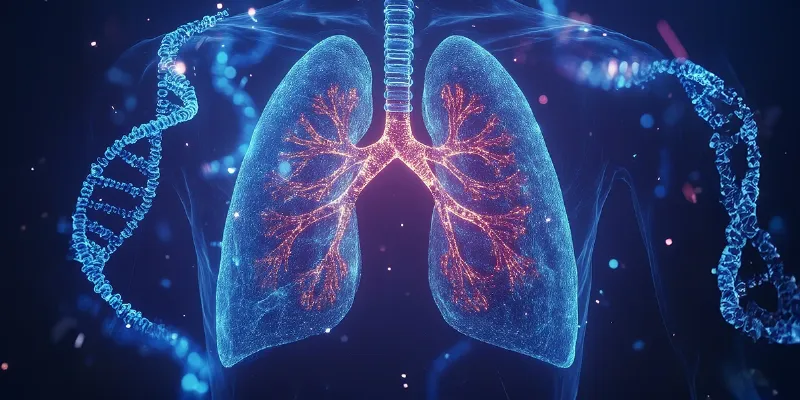Genomic Testing Transforms Breast Cancer Care and Treatment Success

27 May 2024
In an insightful interview with Dr. William Audeh, MD, Chief Medical Officer at Agendia, featured in this edition of ONCOLife, we explore the pioneering strides in genomic testing within breast cancer treatment. Dr. Audeh, shares his expert insights on how MammaPrint and BluePrint assays are revolutionizing early-stage breast cancer management by enhancing treatment precision and reducing unnecessary chemotherapy.
Highlighting the importance of genomic data, Dr. William Audeh, discusses the integration of these tests into clinical practice and the ongoing research that supports their efficacy. This conversation underscores the evolving landscape of oncology where gene expression profiling plays a crucial role in tailoring patient-specific therapeutic strategies.
Click the picture to view the PDF version: Pg 10-13.

How crucial is genomic testing in oncology for treatment planning, preventing recurrence, and impacting success and cure rates? How have the integration of MammaPrint and BluePrint tests into clinical practice transformed the decision-making process in treating early-stage breast cancer?
Dr. Audeh: Our genomic platform could potentially extend to metastatic cancer, but currently, our efforts are dedicated to aiding major decision-making in newly diagnosed or early-stage breast cancer. Historically, decisions were based on clinical factors such as cancer stage and basic pathology, including estrogen and HER2 receptor status.
Managing Breast Cancer Treatment
However, this approach didn’t capture the full complexity of breast cancer, which exhibits significant diversity within these categories. Our platform analyzes gene expression patterns, providing a deeper understanding of the disease. This allows for a mo-re precise therapy selection, which is crucial as most breast cancer cases are diagnosed at a curable stage.
We deliver results from MammaPrint and BluePrint assays within about five days of receiving a sample, ensuring timely decisions for surgery or pre-operative therapy. Our aim is to ensure the right treatment decision is made—the one that maximizes the likelihood of a cure while minimizing toxicity.
Supported by clinical evidence, MammaPrint and BluePrint enhance this precision, helping to adjust treatments to either decrease unnecessary toxicity or increase therapy when needed to improve cure rates. This precision is what marks a major breakthrough in using genomic information.
How does this fast turnaround impact the treatment planning process, and what has been the feedback from clinicians regarding the use of MammaPrint in both pre- and post-operative settings?
Dr. Audeh: Our rapid turn-around time for genomic testing significantly impacts decisions about pre-operative or neoadjuvant therapy versus immediate surgery, receiving universally positive feedback. This quick insight provides surgeons and oncologists with a clear understanding of the cancer type, which also alleviates some of the patient’s uncertainty regarding their treatment plan, enhancing their comfort and psychological well-being early in the therapy process.
Additionally, we support decisions about anti-estrogen or endocrine therapy. For instance, women with an UltraLow MammaPrint risk result have such a positive prognosis that they might choose to stop Endocrine treatment before completing the standard five years if they face toxicity issues. We’ve also identified a subgroup that benefits from more than five years of extended endocrine therapy, providing guidance not only on chemotherapy but also on endocrine therapy decisions.
BluePrint interrogates 80 genes to classify tumors into one of three subtypes (Luminal (A or B), Basal, and HER2). How does understanding the underlying biology of an individual breast cancer improve the precision of treatment approaches?
Dr. Audeh: BluePrint offers a nuanced view of breast cancer biology by assessing the signals from surface receptors, like estrogen, progesterone, and HER2 receptors, to the cancer cell. Traditional pathology confirms only the presence of these receptors but doesn’t evaluate their functional role in tumor growth. However, BluePrint provides this additional precision by confirming whether a receptor is actively driving the cancer.
One significant finding fr-om BluePrint is the identification of estrogen-positive breast cancers where the estrogen receptor, although present in substantial quantities, isn’t the primary driver of growth. These cancers are genomically similar to triple-negative breast cancer, the most aggressive type, necessitating appropriate and aggressive treatment strategies.
We’ve published data showing that these estrogen-positive, genomically Basal cancers respond well to aggressive chemotherapy, achieving pathological complete responses at rates of 30 to 40%, comparable to triple-negative cancers. This response dramatically improves their prognosis.
Some recent studies show the utility of these tests in optimizing neoadjuvant chemotherapy regimens. How does this information guide oncologists in choosing between treatment options, especially considering the side effects associated with anthracycline based therapies?
Dr. Audeh: For many years, it was unclear which women with breast cancer, particularly those with estrogen receptor-positive cancer, needed the additional, yet toxic, anthracycline drugs like Adriamycin in the US or Epirubicin in Europe. These drugs are effective but carry significant risks, including cardiotoxicity. With the advent of MammaPrint and BluePrint, we’re now able to better identify high-risk patients.
We categorize MammaPrint’s high risk into High 1 and High 2, and can further stratify patients into Luminal B or Basal tumor type. Preliminary data suggest that High 1 Luminal B patients can avoid anthracyclines without affecting their chemotherapy outcomes, whereas High 2 patients, both Luminal B and Basal, respond better when their treatment includes anthracycline.
What are the main barriers to the wider adoption of genomic testing in breast cancer treatment, and what initiatives is Agendia undertaking to overcome these challenges, especially in terms of accessibility, and integration into standard of care protocols?
Dr. Audeh: Clinicians need continuous education to stay up-to-date on the evolving field of breast cancer. With the addition of genomic information as a tool for breast cancer management, doctors must now understand how to use it and what it means for treatment plans.
However, another, and potentially bigger, barrier has been the racial homogeneity of genomic data. Historically, most clinical assays were developed using populations of white women, raising valid concerns about the applicability of these results across different genetic ancestries. At Agendia, we are addressing this by using our diverse 16,000 patient database in the FLEX Study to examine genetic ancestry’s impact on breast cancer.
We’ve conducted studies comparing the genomic profiles of breast cancer in black and white women. For instance, in collaboration with Vanderbilt University, we found that the frequency of estrogen-positive Basal subtype is twice as high in black women compared to white women.
This supports the notion that triple-negative breast cancer, which is more prevalent among black women, may reflect unique biological traits. By generating specific data for women of various ancestries, we aim to build trust in the applicability of our genomic findings, enhancing treatment decisions for all women diagnosed with breast cancer.
Looking ahead, what are Agendia’s future plans for research and development? Are there any new genomic tests in the pipeline?
Dr. Audeh: While outcomes for early-stage breast cancer have significantly improved, there’s still much progress to be made. At Agendia, we’re working to develop new genomic signatures like ImPrint, in addition to MammaPrint and BluePrint. Developed with our ISPY research collaborators, ImPrint targets immune activation and identifies breast cancers best suited for immunotherapy.
It comes in two forms: one for hormone-positive and another for triple-negative breast cancers. As new targeted therapies emerge, these gene expression profiling signatures will be crucial in applying treatments effectively. The diversity of breast cancer requires precise patient categorization, which not only facilitates the application of these therapies but also aims to reduce reliance on chemotherapy. Looking ahead, we hope to enhance treatment for metastatic breast cancer, recognizing that its pathology is fundamentally genomic.
Agendia company profile:
Could you provide some general information about Agendia’s company profile, its work, and projects? Dr. Audeh: Agendia, headquartered in Irvine, CA, developed two foundational assays, MammaPrint and BluePrint, which are based on robust science and have been endorsed in many clinical guidelines. Extensive peer reviewed publications utilizing MammaPrint, a 70-gene assay, and BluePrint, an 80-gene assay, have highlighted the necessity for treatment therapies, such as Chemotherapy and Endocrine Therapy, and demonstrate how these tests may help identify growth signaling pathways and potential treatment targets.











Comments
No Comments Yet!